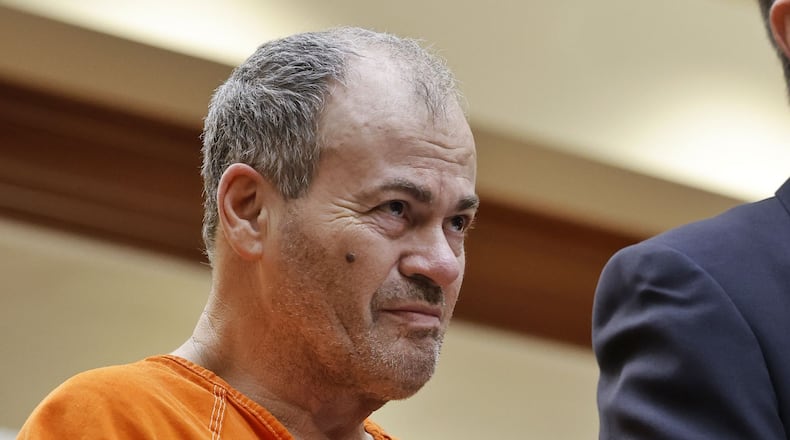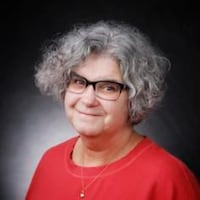They used the latest science to link enhanced DNA recovered at the scene that matched DNA in another sexual assault in Indiana to the family tree of the suspect.
Gmoser, who before his second stint in the prosecutor’s office spent years as a defense attorney litigating cases in the medical field, said “the science of the investigation is fascinating.”
The suspect in the Oxford assault, wore a mask, but his face was visible to the woman for a brief time and a sketch of the suspect was developed. His DNA also was found.
After forcing the woman to commit several sex acts, the attacker took $60 from her purse, according to prosecutors.
In March 2006, a similar attack happened in Fayette County, Ind. DNA collected there matched the DNA in the Oxford case, but there was no match to DNA entered in any law enforcement data base. The case went cold.
Gmoser said Newton proposed the new technology of using genealogy DNA databases to piece together a family tree of the suspect. That is when the office began working with Parabon NanoLabs, a leading expert in the field.
The family tree took several turns but ultimately landed on Ailes as a suspect. Gmoser said Ailes was a construction worker in Oxford at the time of the rape and said he wore a mask in the Indiana assault, but “didn’t speak a word” because the victim was known to him and his voice would have been recognizable.
Investigators were able to find the suspect’s father, and through unraveling a web of genealogy, eventually found the mother. But the man did not know he had fathered the son and the mother didn’t know her husband was not the father, Gmoser said.
“As it turns out, the mother of this defendant was not aware that the father was someone other than her husband. She had a relationship outside of her marriage with the father of this defendant; later she gave birth to the defendant and thought her then husband was the father,” Gmoser said. That is what made it so complicated.”
It is the same DNA technology that led to the arrest and conviction of 74-year-old Joseph James DeAngelo Jr., a former police officer, sentenced to life in prison in 2020 for 13 sexual assaults and 13 murder counts stemming from crimes in the 1970s and 1980s in California.
Last week in another California case, a man was charged with the death of a 1994 death of a woman after DNA found in a bite mark was traced through genealogy to the suspect.
Gmoser pointed to 1987 double murder in Washington State that was solved when investigators reached out to Parabon to apply DNA genealogical tracing. The suspect in that case was arrested and convicted in 2019. It started with a relative taking DNA test in an effort to complete her family tree.
Ailes has pleaded not guilty and is scheduled to be in Butler County Common Pleas Court next week for a pre-trial hearing.
David Washington, Ailes’ defense attorney, said, “It certainly is not flawless. I am certain there are going to be scientists that come in and testify and there’s going to be some scientists that have a different opinion with the regard to the process.”
According to to Parabon’s website, “Genetic genealogy gives you a powerful new tool to generate leads on unknown subjects. When a genetic genealogy search yields useful related matches to an unknown DNA sample, it can narrow down a suspect list to a region, a family, or even an individual ... there is no more powerful identification method besides a direct DNA comparison. Identity can then be confirmed using traditional DNA.”
Gmoser said the possibilities for success are added to daily, because people tracing their family trees are using kits to submit DNA to public databases hourly.
“It’s something people are interested in as a hobby, but it can also lead to ‘great uncle Harry is a rapist’,” Gmoser said. “And really no case is ever cold if the DNA can be traced. There is new evidence being sent in everyday and a new opportunity everyday.”
But the technology is expensive depending on the length of a tracing project and only starts with good police work at the beginning, Gmoser said. DNA alone can’t do it.
Doyle Burke has 30 years of experience investigating cases as a Dayton police detective and Warren County coroner’s investigator. He recently retired from the latter and is working part time in Dayton again with the cold case unit and is learning about the new technology.
“This didn’t exist when I was first working homicide, but it is something they are doing now on the cold case unit I am working on,” he said, noting he recently attended a seminar about the cutting edge technology. But it has to be accompanied with old-fashioned police work the includes eliminating suspects once the family tree has been narrowed down.
“Narrowing down the family tree to say, six brothers, can still bring up a whole lot of suspects, even some the family didn’t know they have. So we check out things like connection to the area, if it was physically possible for them to have been done and it things like that,” Burke said. “So we try to eliminate a lot before we pay to go down different branch of the tree.”
Burke says “it is just another tool. And it’s a good one. But it’s not like on TV, and it is a lot of work.”
Butler County Sheriff’s Officer Chief Deputy Anthony Dwyer said the process is an “invaluable resource” for a case with DNA that cannot be matched to suspect. But it may not be a benefit in unsolved homicide from the 1980s and farther back do to the collection and storage process of evidence.
“If they revisit a case and find some piece of clothing or something that was saved, it could be possible. But they didn’t collect thinking about DNA back then.”
Burke said he agrees it is possible to get DNA forever, but the tracing process requires the enhancement of samples and depending on how they were collected and stored, may not be possible.
Gmoser said his office is working on other cases involved genealogical DNA tracing, but declined to comment further.
“Stay tuned,” he said.
About the Author



